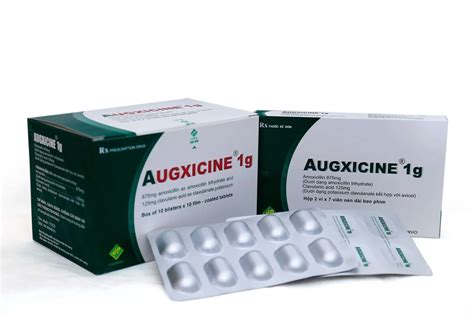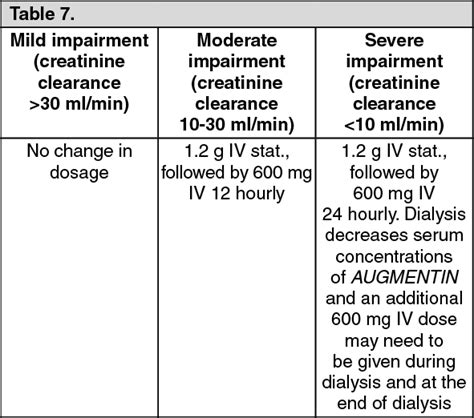Intro
Discover what Augmentin is, a potent antibiotic combining amoxicillin and clavulanate, used to treat bacterial infections, including pneumonia, skin infections, and UTIs, with its mechanism, side effects, and dosage explained in detail.
Augmentin is a widely prescribed antibiotic that has been used to treat a variety of bacterial infections for decades. It is a combination of two active ingredients: amoxicillin and clavulanic acid. Amoxicillin is a penicillin-type antibiotic that works by stopping the growth of bacteria, while clavulanic acid is a beta-lactamase inhibitor that helps to prevent bacteria from becoming resistant to amoxicillin. The combination of these two ingredients makes Augmentin a powerful and effective treatment for many types of bacterial infections.
Augmentin is commonly used to treat infections such as pneumonia, bronchitis, and sinusitis, as well as skin and soft tissue infections like cellulitis and abscesses. It is also used to treat urinary tract infections, including cystitis and pyelonephritis. In addition, Augmentin is sometimes used to treat infections of the ears, nose, and throat, such as otitis media and tonsillitis. The medication is available in a variety of forms, including tablets, capsules, and liquid suspensions, making it easy to take and convenient for patients of all ages.
The importance of understanding Augmentin and its uses cannot be overstated. With the rise of antibiotic resistance, it is crucial that patients and healthcare providers are aware of the proper use and potential side effects of antibiotics like Augmentin. By taking the time to learn about Augmentin and how it works, individuals can make informed decisions about their treatment and take steps to ensure that they are using the medication safely and effectively. In the following sections, we will delve deeper into the world of Augmentin, exploring its benefits, working mechanisms, and potential side effects, as well as providing practical examples and statistical data to illustrate its uses and importance.
How Augmentin Works

Augmentin works by combining the effects of amoxicillin and clavulanic acid. Amoxicillin is a broad-spectrum antibiotic that is effective against a wide range of bacteria, including those that cause respiratory, urinary, and skin infections. However, some bacteria have developed resistance to amoxicillin by producing enzymes called beta-lactamases, which break down the antibiotic and render it ineffective. Clavulanic acid is a beta-lactamase inhibitor that helps to prevent these enzymes from breaking down amoxicillin, allowing the antibiotic to work more effectively.
When taken together, amoxicillin and clavulanic acid provide a powerful synergistic effect, making Augmentin a highly effective treatment for many types of bacterial infections. The medication works by inhibiting the growth of bacteria, ultimately leading to their death. This process occurs through several mechanisms, including the inhibition of cell wall synthesis, the disruption of membrane function, and the interference with protein synthesis.
Benefits of Augmentin
The benefits of Augmentin are numerous and well-documented. Some of the most significant advantages of using Augmentin include: * Broad-spectrum activity: Augmentin is effective against a wide range of bacteria, making it a versatile treatment option for many types of infections. * High efficacy: Augmentin has been shown to be highly effective in treating bacterial infections, with cure rates often exceeding 90%. * Convenience: Augmentin is available in a variety of forms, making it easy to take and convenient for patients of all ages. * Cost-effective: Augmentin is often less expensive than other antibiotic options, making it a cost-effective treatment choice.Side Effects of Augmentin

While Augmentin is generally well-tolerated, it can cause side effects in some individuals. Common side effects of Augmentin include:
- Diarrhea
- Nausea and vomiting
- Abdominal pain
- Headache
- Dizziness
- Rash
In rare cases, Augmentin can cause more serious side effects, such as:
- Allergic reactions
- Seizures
- Stevens-Johnson syndrome
- Toxic epidermal necrolysis
It is essential to note that the risk of side effects can be minimized by taking Augmentin as directed and reporting any concerns or symptoms to a healthcare provider.
Precautions and Contraindications
Augmentin is not suitable for everyone, and there are certain precautions and contraindications that must be considered. These include: * Allergy to penicillin or other beta-lactam antibiotics * History of liver or kidney disease * Pregnancy or breastfeeding * Certain medical conditions, such as mononucleosis or cystic fibrosisIt is crucial to discuss any medical conditions or concerns with a healthcare provider before taking Augmentin.
Dosage and Administration

The dosage and administration of Augmentin vary depending on the individual and the type of infection being treated. The medication is typically taken orally, with or without food, and the dosage is based on the severity of the infection and the patient's age and weight.
Common dosages of Augmentin include:
- 250-500 mg every 8 hours for mild to moderate infections
- 500-875 mg every 8-12 hours for more severe infections
- 20-40 mg/kg/day in divided doses for pediatric patients
It is essential to follow the recommended dosage and administration instructions to ensure the safe and effective use of Augmentin.
Interactions with Other Medications
Augmentin can interact with other medications, including: * Blood thinners, such as warfarin * Probenecid, a medication used to treat gout * Methotrexate, a medication used to treat cancer and autoimmune diseases * Oral contraceptivesIt is crucial to discuss any medications or supplements with a healthcare provider before taking Augmentin.
Conclusion and Final Thoughts

In conclusion, Augmentin is a powerful and effective antibiotic that has been used to treat a variety of bacterial infections for decades. By understanding how Augmentin works, its benefits, and its potential side effects, individuals can make informed decisions about their treatment and take steps to ensure that they are using the medication safely and effectively. Whether you are a patient or a healthcare provider, it is essential to stay informed about the latest developments and research on Augmentin and other antibiotics to ensure the best possible outcomes.
We invite you to share your thoughts and experiences with Augmentin in the comments below. Have you taken Augmentin in the past? What were your experiences with the medication? Do you have any questions or concerns about Augmentin or its uses? We encourage you to join the conversation and share your insights with others.
What is Augmentin used for?
+Augmentin is used to treat a variety of bacterial infections, including respiratory, urinary, and skin infections.
How does Augmentin work?
+Augmentin works by combining the effects of amoxicillin and clavulanic acid, which provides a synergistic effect and makes the medication highly effective against a wide range of bacteria.
What are the common side effects of Augmentin?
+Common side effects of Augmentin include diarrhea, nausea and vomiting, abdominal pain, headache, and dizziness.
